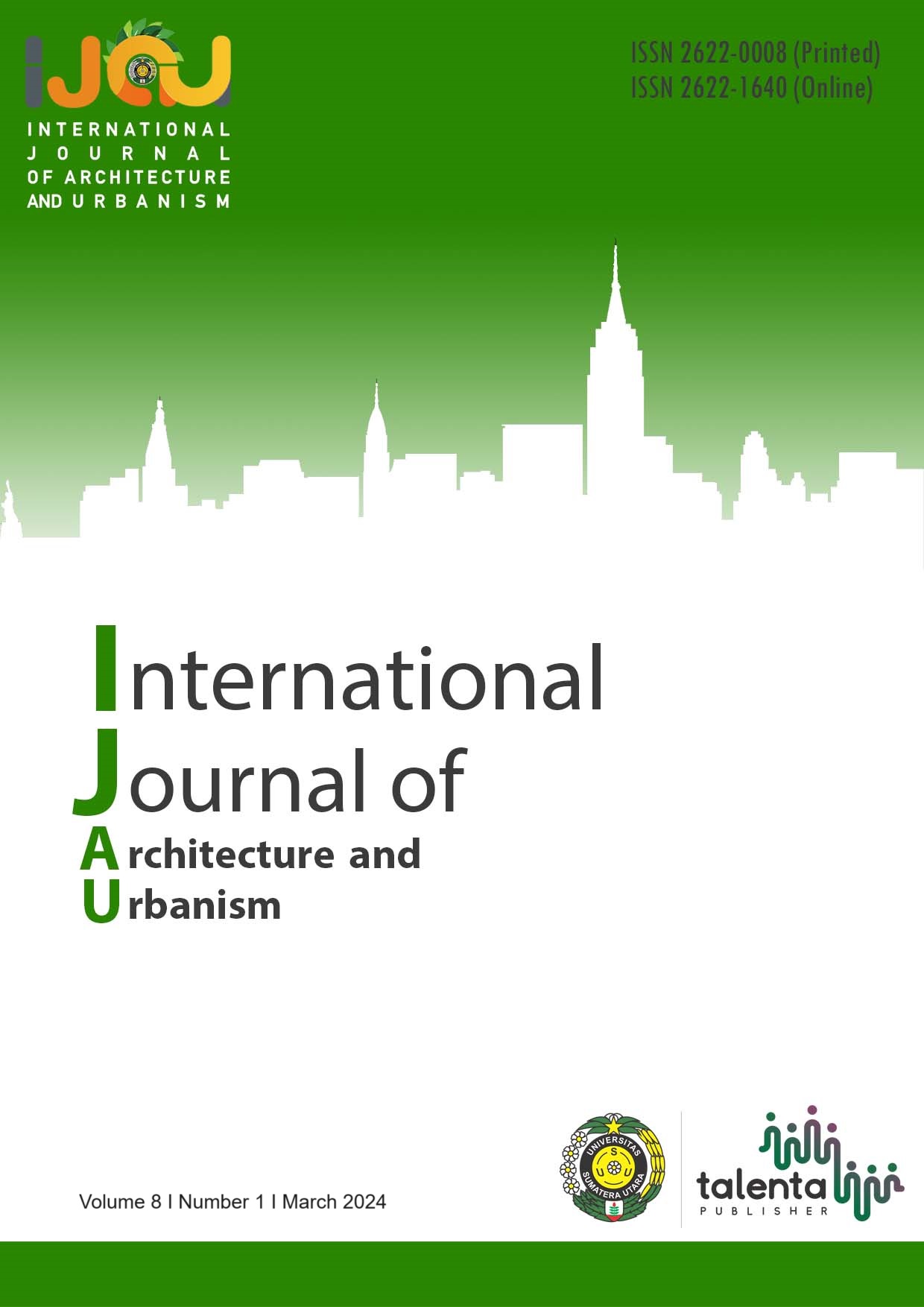Understanding Traditional Malay Communities In Riau Using The Levi-Strauss Framework Of Structuralism
DOI:
https://doi.org/10.32734/ijau.v8i1.15093Keywords:
settlements, malay, structuralism, Levi-Strauss, CultureAbstract
Riau is one of the provinces in the middle of the island of Sumatra. Geographically, Riau's land stretches from the slopes of Bukit Barisan to the coast of the Strait of Malacca. Many traditional Malay settlements are found along the Kampar River, Rokan River, Kampar River, and Indragiri River. Malays are very dominant in Riau Province, but there are also various other ethnic tribes such as Chinese, Banjar, and others. This study will examine the typology of Malay settlements in Riau Province. Typology is the study of types, that is, the attempt to conduct a review of types based on certain criteria. In this case, the framework of Levi-Strauss structuralism is the basis for a review of typology. Levi-Strauss believes that structuralism based on structural studies developed in culture, such as myths, beliefs, language, and symbols can be used as a reference for understanding a society including in the study of traditional settlements. This study uses literature research methods. The stages of the literature review are determining research topics, collecting information and data through various materials and scientific papers, discussion, and writing. Learn from various information about Malay settlements in Riau Province such as the Koto Sentajo settlement, Akit Tribe settlement, Kampung Dalam settlement, Siak Hulu settlement, and Rokan Hulu Defense Village settlement. Culture played an important role in the formation of these traditional Malay settlements. Each Malay settlement formed its distinctive features based on the cultural structure that was developed and adopted. Different cultural elements such as Malay dialects, social strata structures, customary institutions, rituals, inheritance, and kinship systems affect different typologies of traditional Malay settlements.
Downloads
Downloads
Published
How to Cite
Issue
Section
License
Copyright (c) 2024 International Journal of Architecture and Urbanism

This work is licensed under a Creative Commons Attribution-ShareAlike 4.0 International License.


.png)










